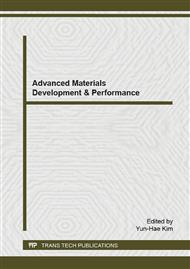p.226
p.231
p.235
p.241
p.249
p.253
p.259
p.263
p.267
Effect on the Flow Properties of the Mortar Using Micro-Nano Bubbles
Abstract:
Bubble of which diameter ranges 50μm to nanometer-order is called micro-nanobubble (here in after “MNB”), it has properties different from the millimeter-order and centimeter-order naturally generated. In general, the bubble rises rapidly in water and burst at the surface. However, the MNB tends to stay in the water as the diameter of itself becomes small. In addition, MNB has various characteristics unlike general water. A typical characteristic includes water purification effect, and is utilized such as water treatment, agricultural industry and chemical industry. However, there is not much report that was utilized in the construction sector so far. In this study, it paid attention to the feature of MNB that the resistance when flowing in the tube decreases, and the possibility of the workability improvement of the grout material and the filling material by the use of MNB was investigated by the experiment of the cement paste. As the results, when it compared properties of the paste that used both MNB and tap water, no difference was observed in the air content and the flow value. However, plastic viscosity of the paste that used MNB was smaller than control paste. In consequence it was confirmed that the flow speed of the paste when it flows in the pipe was improved. On the other hand there is no difference in the compressive strength.
Info:
Periodical:
Pages:
249-252
Citation:
Online since:
June 2015
Keywords:
Price:
Сopyright:
© 2015 Trans Tech Publications Ltd. All Rights Reserved
Share:
Citation:


